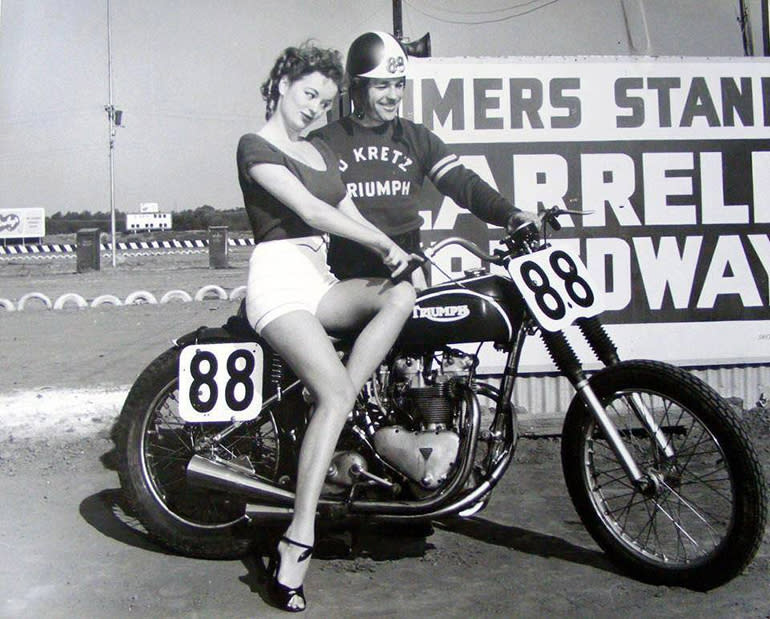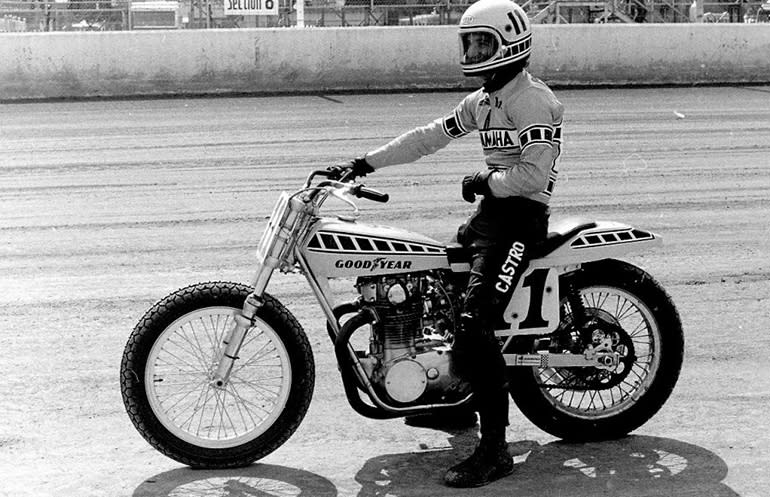A Beautiful History of AMA Pro Flat Track Racing
Speed is one of the oldest American traditions. In the great American landscape, we've sectioned off areas of land, tilled them as flat as possible, tied a rope around an oval, and then turned out a faction of speed-hungry young men to see who can go around it the fastest. Flat track racing has been around for nearly a century in an organized format, and I dare to say that it has been around since the very first time a land owner's buddy brought his motorcycle out to the property. Flat track racing is possibly the oldest form of motorcycle racing still in existence. Racing and competition is in our American blood.
READ MORE: 8 Things You Didn't Know About America's Original Extreme Sport - AMA Pro Flat Track
History of AMA Pro Flat Track Racing
The America Motorcycle Association (AMA) took on the great duty of making flat racing legit in the early 20th century, known to have been connected to events as far back as 1924. In 1932, AMA first created Class A for AMA Pro Flat Track Racing. (This was shortly after the formation of the AMA itself.)
Flat track racing has been dominated throughout the years by the bar and shield, Harley Davidson, for three-quarters of a century—they've been the only consistent manufacturer to have supported the discipline from the beginning. The early years of competition were heavy in the infancy of the sport among only Indian and Harley-Davidson. Japanese brands like Yamaha weren't imported to the US until the 1950s and brands like Indian fell away after the Great Depression.
If you stayed awake in history class, then you know that the US was crucially affected by the Great Depression in 1929, but even through the hardship, Class A events still saw a small amount of support, which proved to be enough to keep it going. As the Great Depression lengthened on until 1939, the tough economy took its toll on the brands, and they started to pull support.

READ MORE: Flat Track Racing - Hooligans, Harley's and Classics, the Del Mar Season Finale | RideApart
AMA's Class A was an open class for essentially anything you could imagine. The crucible of racing was used by manufacturers to turn prototype machinery loose into the dogfight-on-the-dirt to drive innovation. This was obviously quite expensive and only major teams, with factory backing could afford to be competitive. Later, the AMA introduced the Class C, that offered accessibility to everyday persons. This class let racers use street-legal motorcycles to bring the cost of racing down, and thus, allowed more racers to compete.
These Class C speed addicts opted for the readily-available American brands, Indian and H-D, as the bikes were easy to source and maintain. As budgets shrunk during the Great Depression, the Class C series became the premier class in dirt track racing. The working-class could still afford to get out there and mix it up on the weekends.
Factory involvement in the Class A series had all but dried up during the tough economic times. Once the nation began to rebound from the Great Depression, the Class C championship was now the premier class for the AMA. Many Americans had fallen into their respective camps revolving around Harley Davidson and Indian Motorcycle. This rivalry helped to further cement the feud between the two brands and their supporters.
In the early years of the second World War, the AMA Championship stayed in its course. It wasn't until the US sprang to the aide of the Allies in 1942 that the ovals laid quiet. The men that would normally be pushing their bodies and machines to their limits were now engrossed in the war effort. Upon the close of World War II, returning GIs once again took to the tracks and the championships returned in 1945. However, it did not return in full form until several years after the war.

The AMA introduced the Grand National Championship
For seven years, the champion was crowned on the results of a single race: The Springfield Mile. Then, in 1954, the AMA introduced the Grand National Championship, which consisted of several different disciplines: mile-long dirt track, half-mile dirt track, short-tack, TT steeplechase, and road races on paved circuits.
The mid-50's saw the demise of the Indian Motorcycle company, and the resulting dominance of Harley-Davidson. Being the only manufacturer still innovating products, H-D was left to log multiple championships in the 50's.
By the early 1960's, motorcycling culture was beginning to take hold in the hearts and minds of the US people. On the back of several successful movies including, The Wild One (1953), Rebel without a Cause (1955), The Great Escape (1963). Motorcycling was becoming more pervasive than ever before. This led to foreign motorcycle manufacturers looking to cash in on the new obsession.


 Yahoo Autos
Yahoo Autos 
